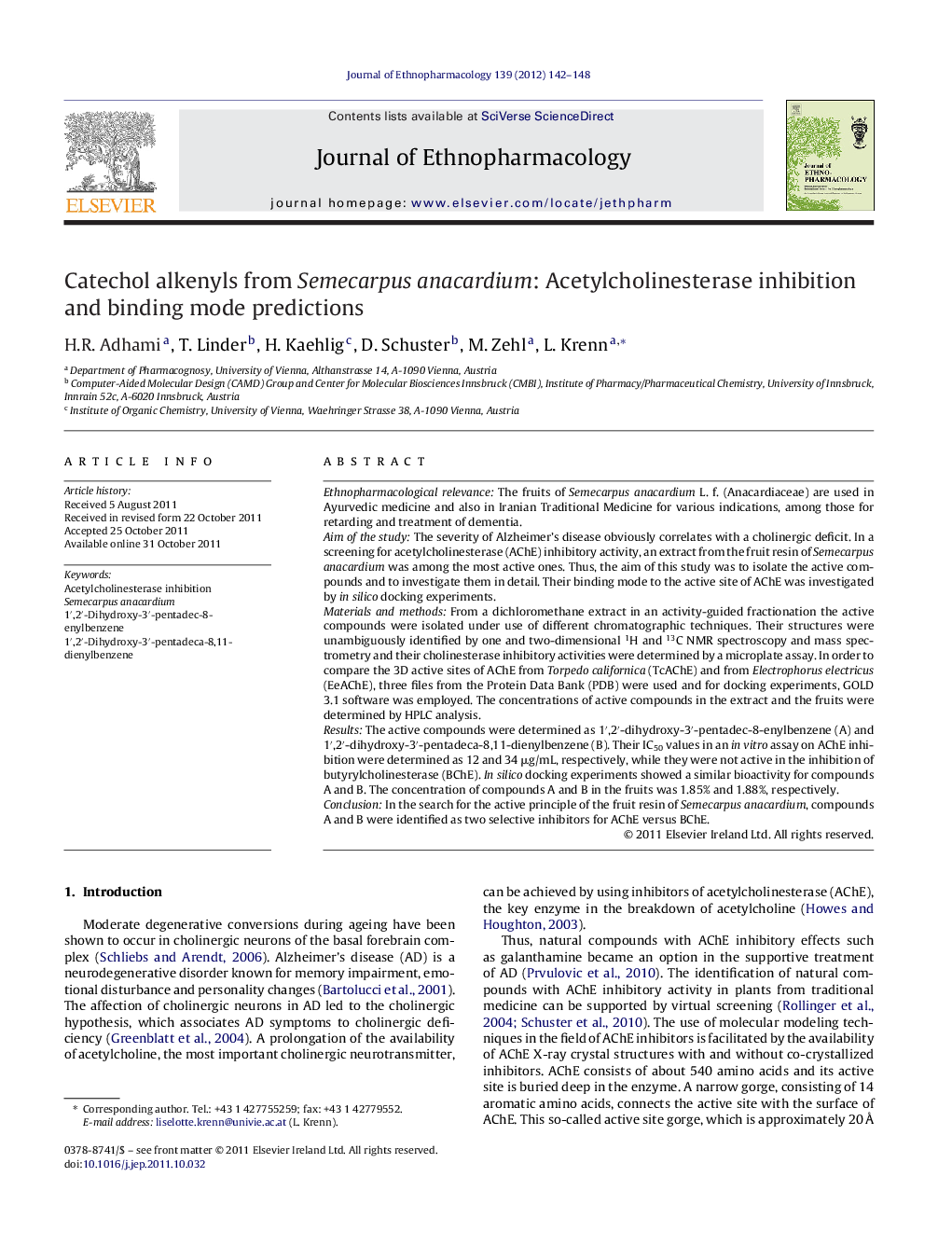| کد مقاله | کد نشریه | سال انتشار | مقاله انگلیسی | نسخه تمام متن |
|---|---|---|---|---|
| 5839101 | 1123987 | 2012 | 7 صفحه PDF | دانلود رایگان |

Ethnopharmacological relevanceThe fruits of Semecarpus anacardium L. f. (Anacardiaceae) are used in Ayurvedic medicine and also in Iranian Traditional Medicine for various indications, among those for retarding and treatment of dementia.Aim of the studyThe severity of Alzheimer's disease obviously correlates with a cholinergic deficit. In a screening for acetylcholinesterase (AChE) inhibitory activity, an extract from the fruit resin of Semecarpus anacardium was among the most active ones. Thus, the aim of this study was to isolate the active compounds and to investigate them in detail. Their binding mode to the active site of AChE was investigated by in silico docking experiments.Materials and methodsFrom a dichloromethane extract in an activity-guided fractionation the active compounds were isolated under use of different chromatographic techniques. Their structures were unambiguously identified by one and two-dimensional 1H and 13C NMR spectroscopy and mass spectrometry and their cholinesterase inhibitory activities were determined by a microplate assay. In order to compare the 3D active sites of AChE from Torpedo californica (TcAChE) and from Electrophorus electricus (EeAChE), three files from the Protein Data Bank (PDB) were used and for docking experiments, GOLD 3.1 software was employed. The concentrations of active compounds in the extract and the fruits were determined by HPLC analysis.ResultsThe active compounds were determined as 1â²,2â²-dihydroxy-3â²-pentadec-8-enylbenzene (A) and 1â²,2â²-dihydroxy-3â²-pentadeca-8,11-dienylbenzene (B). Their IC50 values in an in vitro assay on AChE inhibition were determined as 12 and 34 μg/mL, respectively, while they were not active in the inhibition of butyrylcholinesterase (BChE). In silico docking experiments showed a similar bioactivity for compounds A and B. The concentration of compounds A and B in the fruits was 1.85% and 1.88%, respectively.ConclusionIn the search for the active principle of the fruit resin of Semecarpus anacardium, compounds A and B were identified as two selective inhibitors for AChE versus BChE.
N-9-(1,2,3,4-tetrahydroacridinyl)-Nâ²-5-[5,6,7,8-tetrahydro-2â²(1â²H)-quinolinonyl]-1,10-diaminodecane bound to TcAChE (A) and 1â²,2â²-dihydroxy-3â²-pentadec-8-enylbenzene and 1â²,2â²-dihydroxy-3â²-pentadeca-8,11-dienylbenzene and urushiol docked into the ligand binding pocket of TcAChE (B and C).153
Journal: Journal of Ethnopharmacology - Volume 139, Issue 1, 6 January 2012, Pages 142-148